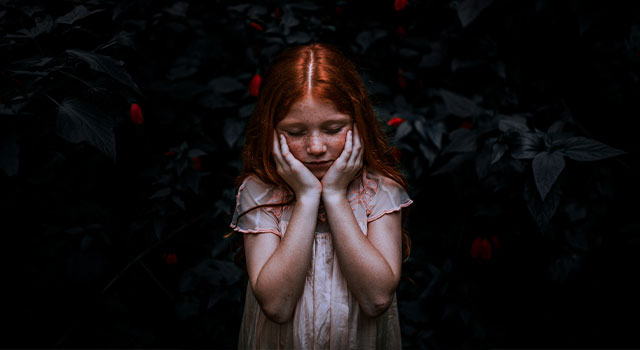 An estimated 1.25 million children in North America are affected by some form of visual impairment that impacts their daily living. Ranging from nearsightedness to lazy eye to cross-eye, these visual problems can have a drastic impact on their performance in the classroom, which may lead them to lag behind their peers.
An estimated 1.25 million children in North America are affected by some form of visual impairment that impacts their daily living. Ranging from nearsightedness to lazy eye to cross-eye, these visual problems can have a drastic impact on their performance in the classroom, which may lead them to lag behind their peers.
Fortunately, there are certain steps that educators can take to help their students with visual problems succeed. First, let's explain the link between vision and learning.
Why are Visual Skills Necessary For Learning?
Because up to 80% of classroom learning is vision-based, it is no wonder that children with subpar visual skills may lag behind their peers academically.
We're not referring to visual acuity, such as myopia (nearsightedness) or hyperopia (farsightedness), but rather the visual skills that rely on brain-eye communication. Problems with these skills can only be detected during a functional visual exam.These vision skills include eye teaming, tracking, accommodation, and focusing, all of which are critical for proficient reading, writing, and reading comprehension.
Teachers of school-aged children with poor visual skills can implement certain strategies to accommodate and even improve students’ academic performance. Below we've listed a few suggestions.
How Educators Can Help Students With Vision-Related Learning Challenges
1. Consider Where Your Students Should Be Seated
Make sure your students are seated facing the whiteboard. They should not have to look over their shoulder or turn around to see what the teacher is writing on the board. Some classrooms have students seated at round tables, forcing some children to turn around to see the front of the classroom. While this type of seating arrangement has its benefits, it is not appropriate for children with visual impairments, as they may find it difficult to quickly shift their gaze.
2. Pay Attention to Their Visual Needs
Try to meet the students' visual needs. For example, if a child is expected to wear glasses for certain tasks, make sure that the child follows through. If the child doesn't comply, consider speaking with the child’s parents.
3. Optimize Classroom Lighting
If you know that a certain student has a visual problem, seat them so that they aren’t in direct sunlight or under a shadow. Natural lighting is preferred, but when this isn’t possible, tungsten light bulbs are generally favored by the eye over fluorescent lighting. Please note that any flickering light bulb should be changed without delay.
4. Choose a Teaching Method That Accommodates Their Vision
Below are steps you can take to help students with poor visual skills:
- Use black or dark-colored markers on the whiteboard. Avoid bright colored markers like orange, red, and yellow.
- While writing on the board, say the words/numbers aloud to assist those who may have difficulty reading or seeing the text.
- Avoid using language that relies heavily on vision, such as “like this one” or “over there.”
- Be patient when a student with subpar visual skills stares off into space or daydreams. This is often a symptom of visual dysfunction, rather than a lack of attention.
How We Can Help
At In Depth Vision Optometry, our goal is to help each child reach their full potential by strengthening any visual skill deficiencies.
We treat children with many types of visual dysfunctions, often using a specialized form of therapy called vision therapy. Vision therapy trains the eyes to focus better or work as a team (among many other visual skills) by strengthening the eye-brain connection.
To learn more or to ask any questions, contact In Depth Vision Optometry today.
In Depth Vision Optometry serves patients from Auburn, Nevada, Sacramento, El Dorado, and throughout California.
REFERENCES
- https://www.accreditedschoolsonline.org/resources/child-vision-problems/
- https://www.acbo.org.au/for-patients/about-vision/146-learning-difficulties-advice-for-teachers
